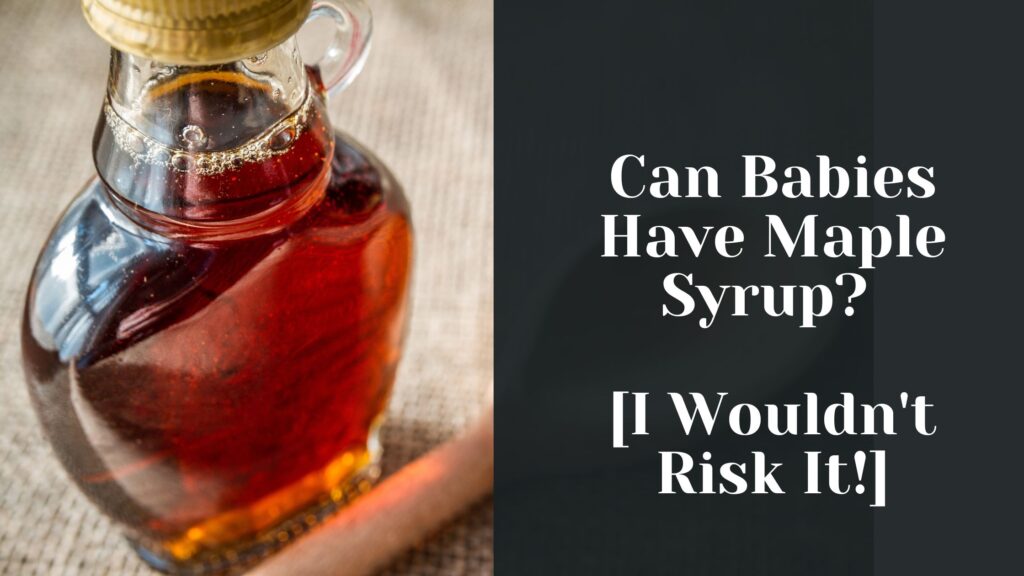Jello has been a popular dessert for both adults and children for generations.
But can babies eat jello?
When it comes to introducing new foods to babies, it’s important to consider their nutritional needs and potential allergies, as well as the risk of choking.
In this blog post, we’ll delve into the potential benefits and drawbacks of giving jello to babies, as well as:
- Age guidelines
- Preparation tips
- And more!
Can Babies Eat Jello?
Jello is a good source of hydration, especially during hot weather or when a child is sick.
However, there are a few potential drawbacks to giving jello to babies.
One concern is the risk of choking, especially for babies who are not yet old enough to chew solid foods.
Jello has a slippery texture that can make it difficult for young babies to grasp and chew, increasing the risk of choking.
Another potential issue with jello is its high sugar content. While a small amount of sugar is okay in a baby’s diet, it’s important to limit their intake of sugary foods and drinks.
According to the Cleveland Clinic, children under the age of 2 should not have more than 6 teaspoons (25 grams) of added sugars per day.
A single serving of jello made with regular jello mix can contain up to 17 grams of sugar.
Age Guidelines For Introducing Jello To Babies
At this age, babies are developmentally ready to start trying solid foods, and jello can be introduced as a soft, easy-to-swallow option.
When giving jello to a baby for the first time, it’s important to cut it into small, age-appropriate pieces.
For babies 6 to 8 months old, it’s best to start with jello that’s been melted into a liquid and then cooled, as it will be easier for them to swallow.
As babies get older and become more adept at chewing, you can gradually introduce thicker, more solid pieces of jello.
How To Prepare Jello For Babies
To prepare jello for a baby, follow these steps:
- Choose a sugar-free or reduced sugar jello mix. These options are available at most grocery stores and have less added sugar than regular jello mix, making them a healthier choice for babies. Keep in mind that even sugar-free jello mix contains natural sugars from the fruit juice or other flavorings used, so it’s still important to limit the amount you give to your baby.
- Prepare the jello according to the package instructions, using either water or an alternative milk such as almond milk or soy milk. Avoid using cow’s milk to make jello for babies under the age of 1, as cow’s milk can be difficult for them to digest and may cause allergic reactions.
- Cut the jello into small, age-appropriate pieces. For babies 6 to 8 months old, you may want to start with melted, liquid jello. For babies 9 months and older, you can gradually introduce thicker, more solid pieces of jello as they become more adept at chewing.
- Offer the jello to your baby as a snack or dessert, and always supervise them while they eat to ensure they don’t choke.
Other Considerations For Giving Jello To Babies
While jello is generally a low-allergy food, it’s still possible for some babies to have a reaction to it.
If you’re introducing jello to your baby for the first time, it’s a good idea to watch for signs of a food allergy, such as hives, swelling, or difficulty breathing.
If you notice any of these symptoms, stop giving your baby jello and contact your healthcare provider for further guidance.
It’s also important to keep in mind that jello should not be a staple in a baby’s diet.
It’s okay to give it to them as an occasional treat, but it’s important to offer a variety of healthy, nutrient-dense foods as the mainstay of their diet.
This will help ensure your baby gets the nutrients they need for proper growth and development.
FAQ
Can babies have flavored jello or should it be plain?
It’s generally safe for babies to have flavored jello, as long as it’s made with natural flavorings and doesn’t contain any artificial additives or preservatives. Keep in mind that flavored jello may have a higher sugar content than plain jello, so it’s important to choose a reduced sugar or sugar-free mix and limit the amount you give to your baby.
Can babies have jello made with cow’s milk or should it be made with an alternative milk?
It is best to avoid giving cow’s milk to babies under the age of 1, as it can be difficult for them to digest and may cause allergic reactions. Instead, opt for an alternative milk such as almond milk or soy milk to make jello for your baby.
Is it safe for babies to have jello made with artificial sweeteners?
It’s generally not recommended to give babies food or drinks that contain artificial sweeteners, as their long-term effects on children’s health are not yet fully understood. The AAP advises against giving babies and young children food and drinks that contain non-nutritive sweeteners, such as aspartame and sucralose. Instead, opt for a reduced sugar or sugar-free jello mix that uses natural sweeteners, such as fruit juice or stevia.
Conclusion
Jello can be a suitable option for babies as a soft, low-allergy food that’s good for hydration.
However, it’s important to wait at least until your baby is 6 months old and consider the potential risks of choking and the high sugar content of regular jello mix.
By choosing a reduced sugar or sugar-free mix, cutting the jello into small, age-appropriate pieces, and offering it as an occasional treat, you can help ensure that your baby enjoys jello safely and healthily.
As with any new food, it’s important to consult with your healthcare provider before introducing jello to your baby. They can provide personalized advice based on your baby’s individual needs and help you ensure that they are getting the nutrients they need for proper growth and development.


